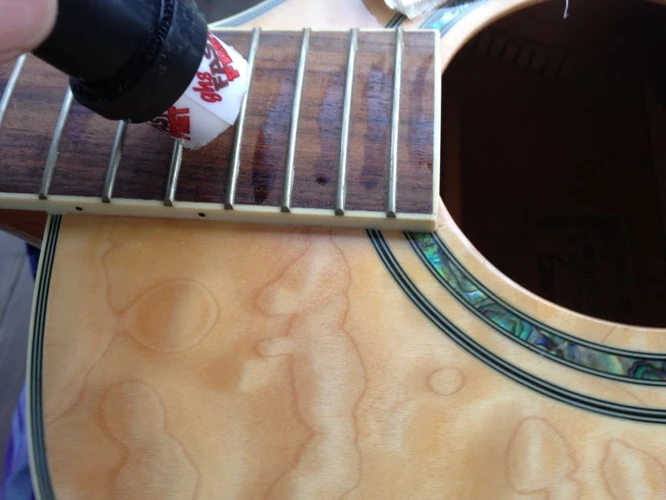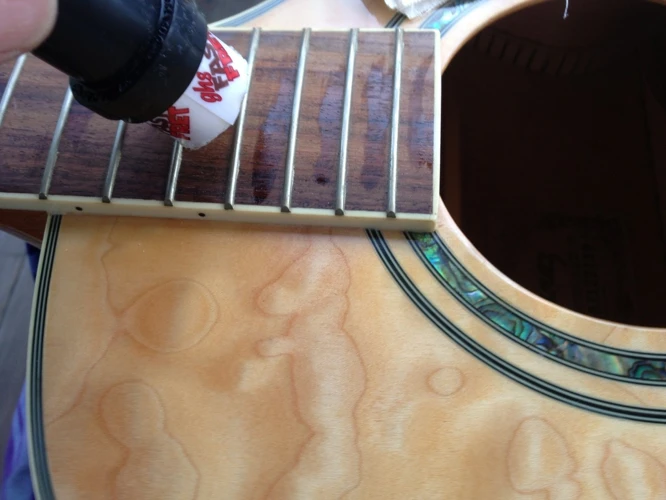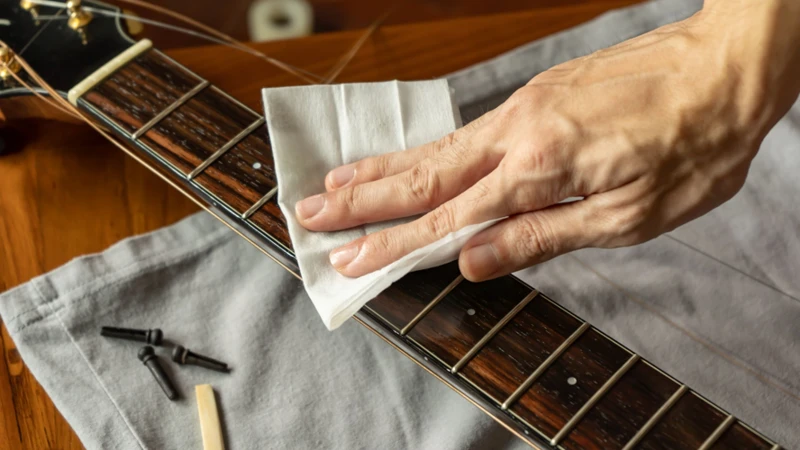Acoustic guitars are beautiful instruments that produce rich, warm tones loved by musicians and music enthusiasts alike. To keep your acoustic guitar sounding its best and looking pristine, it’s essential to maintain it properly. One crucial aspect of guitar maintenance is keeping it clean. A clean acoustic guitar not only looks great but also ensures optimal sound quality and longevity. In this article, we will discuss the importance of keeping your acoustic guitar in clean condition and provide you with some useful tips on how to do so effectively.
Importance of Keeping Your Acoustic Guitar Clean
Maintaining a clean acoustic guitar is vital for several reasons. Firstly, dirt, dust, and grime can accumulate on the instrument’s body, neck, and strings over time, affecting its playability and sound quality. A dirty guitar can lead to a buildup of residue on the fretboard, making it difficult to play smoothly and causing strings to wear out faster. Additionally, a lack of cleanliness can result in corrosion of metal parts, such as frets and tuning pegs, which can impact tuning stability and overall performance.
Furthermore, a clean acoustic guitar is more visually appealing and reflects a sense of care and professionalism. Whether you’re a beginner or a seasoned player, taking pride in the cleanliness of your instrument not only enhances its aesthetic appeal but also demonstrates your dedication to your craft.
How to Clean Your Acoustic Guitar
Cleaning your acoustic guitar is a simple yet essential process that can be done regularly to maintain its condition. Here are some steps to guide you through the cleaning process:
1. Gather the Necessary Tools
Before you begin cleaning your acoustic guitar, gather the following tools:
– A soft, lint-free cloth
– Guitar polish or cleaner
– Guitar string cleaner/lubricant
– Cotton swabs
– Toothbrush (soft-bristled)
– Guitar maintenance kit (optional)
2. Remove the Strings
To clean your acoustic guitar thoroughly, it’s best to remove the strings. This allows you to access all parts of the instrument, including the fretboard and bridge, without obstruction. Carefully unwind the strings from the tuning pegs and remove them from the bridge. Be sure to loosen them gradually to avoid any sudden tension release that could damage the guitar.
3. Clean the Body and Neck
Using a soft, lint-free cloth, gently wipe down the body and neck of the guitar to remove any dust, dirt, or fingerprints. For stubborn grime, you can lightly dampen the cloth with water or a small amount of guitar cleaner/polish. Avoid using harsh chemicals or abrasive materials that could damage the guitar’s finish.
4. Clean the Fretboard
The fretboard is a critical part of the guitar that requires regular cleaning and conditioning. Use a specialized fretboard cleaner or conditioner to remove dirt and grime while moisturizing the wood to prevent drying out and cracking. Apply the cleaner with a soft cloth or cotton swab, and follow the manufacturer’s instructions for best results.
5. Polish the Guitar
After cleaning the body, neck, and fretboard, you can polish the guitar to restore its shine and protect the finish. Apply a small amount of guitar polish to a clean cloth and gently buff the surface in circular motions. Be sure to use a polish that is suitable for your guitar’s finish (e.g., nitrocellulose, polyurethane) to avoid any damage.
6. Clean the Hardware
Don’t forget to clean the hardware components of your acoustic guitar, such as tuning pegs, bridge, and pickups. Use a soft cloth or cotton swab to remove any dirt or residue that may have accumulated. For stubborn grime, you can use a toothbrush with soft bristles to gently scrub the metal parts.
7. Restring the Guitar
Once you have cleaned and polished your acoustic guitar, it’s time to restring it with a fresh set of strings. Be sure to choose high-quality strings that suit your playing style and genre preferences. Follow the manufacturer’s instructions for stringing the guitar properly and tuning it to the desired pitch.
Tips for Maintaining a Clean Acoustic Guitar
To keep your acoustic guitar in top condition, here are some additional tips for maintaining its cleanliness:
1. Store Your Guitar Properly
When not in use, store your acoustic guitar in a protective case or gig bag to shield it from dust, humidity, and temperature fluctuations. Avoid leaving it exposed to direct sunlight or extreme conditions that could damage the wood and finish.
2. Wipe Down After Each Use
Get into the habit of wiping down your acoustic guitar with a soft cloth after each playing session to remove sweat, oils, and debris that can accumulate on the instrument. This simple step can prevent buildup and prolong the time between deep cleaning sessions.
3. Monitor Humidity Levels
Maintaining proper humidity levels is crucial for the health of your acoustic guitar, as extreme dryness or dampness can cause the wood to warp, crack, or swell. Use a hygrometer to monitor humidity levels in the room where you store your guitar and invest in a humidifier or dehumidifier if needed.
4. Avoid Eating or Drinking Near Your Guitar
To prevent spills and food particles from coming into contact with your acoustic guitar, refrain from eating or drinking while playing. Crumbs, liquids, and residues can easily damage the finish and attract insects that may harm the instrument.
5. Schedule Regular Maintenance Checks
Consider taking your acoustic guitar to a professional luthier or guitar technician for regular maintenance checks and setups. They can inspect the instrument for any signs of wear, address any issues promptly, and provide professional cleaning and conditioning services to keep your guitar in optimal condition.
Looking to keep your acoustic guitar in top shape? Learn how to properly clean and condition it with the best guitar cleaner and conditioner for acoustic guitars. Check out our tips on cleaning acoustic guitars, the importance of regular acoustic guitar cleaning, and how to clean acoustic guitar strings. Don’t forget to also read up on the importance of restringing your acoustic guitar for optimal performance!
Conclusion
In conclusion, maintaining a clean acoustic guitar is essential for preserving its playability, sound quality, and appearance. By following the tips and steps outlined in this article, you can keep your guitar in top condition and enjoy years of musical enjoyment. Remember to clean your acoustic guitar regularly, store it properly, and address any maintenance issues promptly to ensure it remains a cherished instrument for years to come. A clean acoustic guitar not only sounds better but also reflects the care and dedication of its owner. So, pick up your cloth and polish and give your acoustic guitar the love and attention it deserves!




